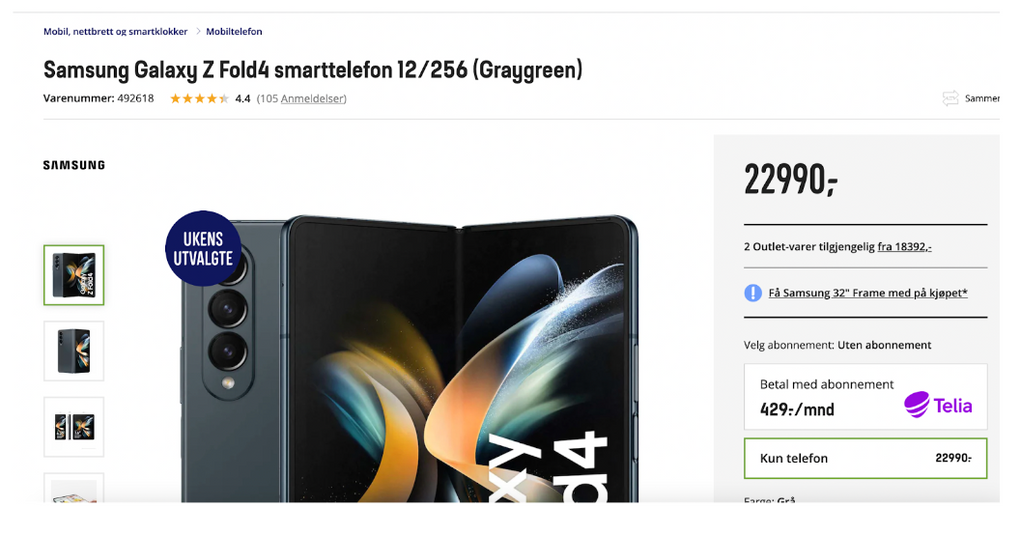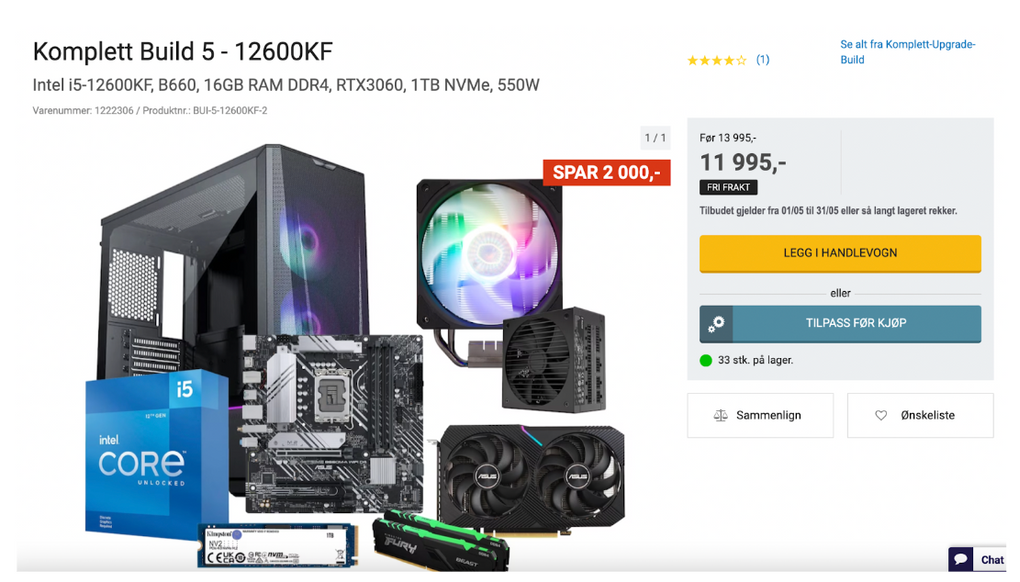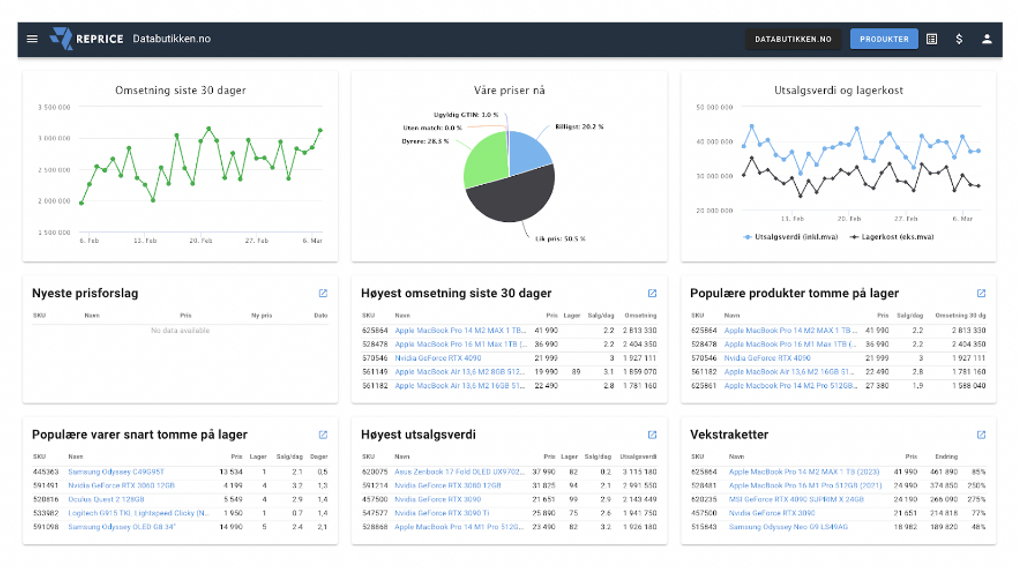Unlocking Business Growth: The Power of a Smart and Effective Pricing Strategy in E-commerce
June 05, 2023 | 10 minutes read
You're currently overseeing and responsible for the success of a new online electronics store.
Every morning, you take a look into the performance metrics and sales data from the day before, looking for those insights that will take your store to the next level.
Today, something major catches your eye.
What you see is a huge discrepancy between the number of website visitors you’re getting - and the actual sales figures.
Even though you have a strong influx of traffic, the average order value and conversation rate are much lower than you anticipated.
As a result, your inner warning lights start flashing, alerting you to a potential pricing problem.
This typical scenario isn’t abnormal in the buzzing world of e-commerce and retail. In fact, 70% of consumers choose price, over quality, when making a purchase online.

Which means that price sensitivity has become a primary factor for the majority of customers in today's highly competitive market.
Which brings us to our next and main point:
Mastering a great pricing strategy is crucial for e-commerce managers of today.
In this guide, we’ll explore pricing strategy in-depth, covering different types of strategies and providing the insights you need to choose one.
Table of contents:
- What is a pricing strategy?
- 5 benefits of an effective pricing strategy
- The 7 main types of pricing strategies
- How to choose your pricing strategy
- 3 ways to improve your pricing strategy
- Conclusion
What is a pricing strategy?
A pricing strategy can be defined as the systematic approach that businesses use to set the right price of their product or service.
Regardless of their size, most businesses take into account factors such as production costs, labor expenses, and promotional investments, before incorporating a margin to ensure a decent enough profitability.
So by implementing a carefully planned pricing strategy, companies can significantly improve their revenue generation, while at the same time remaining toe-to-toe with their competitors in the market.
5 benefits of an effective pricing strategy
From showing value to acquiring new customers, here are the 5 benefits of having a well thought out pricing strategy:
1. Sets you apart from the competition
Having an effective pricing strategy can really make a significant difference when it comes to standing out from your competition.
The focus should be on achieving an advantage in the dynamic and rapidly evolving market, which should be a major concern for you (if it isn't already).
By carefully evaluating factors such as product positioning, market demand, and the competitive landscape, you can set your prices strategically to differentiate yourself from the rest.
2. Shows value
When it comes to pricing your products, it's important to convey their value in the best way possible.
It’s not always easy: Customers will sometimes associate low prices with low-quality products, while high prices might scare them away.
Finding the right pricing strategy helps you strike the right balance and consider what your customers actually prefer.
3. Pulls in new customers
The first impression you make on customers often starts with the price of your product.
So if you’re able to offer the best and the most competitive pricing, it becomes a powerful motivator for customers to choose your brand over others.
4. Enhances your revenue
Having a smart pricing strategy can ultimately help you make more money.
By carefully considering certain things like your current market conditions, how your previous and new customers behave, and your own costs, you can set prices that really improve your overall revenue and bottom line.
5. Improves customer satisfaction and loyalty
Once prices are perceived as consistent and fair, customers create a newly found sense of reliability and trust in your company.
And what does this trust lead to?
Those strong, long-term relationships and repeat purchases.
And as a result, you’ll also experience higher customer retention rates.
7 types of pricing strategies
Now that you know the importance of a pricing strategy, take a look at the 7 most common pricing strategies e-commerce companies use today:
1. Competitor pricing
The name says it all: Pricing based on competition means you determine your prices by looking at what your rivals are charging.
This approach can often be a dependable and straightforward tactic, especially if you're a company that's new to the scene and just got the ball rolling.
However, one of the biggest online retail challenges is keeping up with competitor’s pricing, according to 58% of e-commerce companies.

Take the following example:
Just picture yourself running an online clothing store that's all about high-quality jeans. You then notice that a bunch of other e-commerce stores are selling similar jeans - but at lower prices.
In that case you start lowering your prices to match or even beat the ones your competitors are offering.
Example of how junkyard.no (first image) is pricing the same pair of jeans as nelly.no (second

2. Value-based pricing
Value-based pricing is when businesses charge based on perceived worth - rather than production costs, or what they’ve previously sold the product/service for.
Most often than not - it’s effective when a product or service is seen as exclusive or scarce (which of course makes people want it more).
However, it may require some degree of speculation, plus accurate enough demand assessment.
For example: A tech company releases a limited edition smartphone with advanced features and a super innovative and smooth design.
Using value-based pricing, the company can set a higher price point based on the phone’s perceived value among those early buyers or super excited tech enthusiasts.
Emphasizing its exclusivity and unique features is a surefire way to capture both interest and willingness to pay a premium.
Example from elkjøp.no:

3. Price skimming
If you choose price skimming, you'll start with high prices that the market can bear and then slowly and steady decrease them.
Though it’s deemed effective when implemented correctly, disclaimer: This strategy demands careful consideration and caution.
The reason being something called negative market perception - if customers don’t agree with the starting price or think it's unfair, it could potentially damage your brand reputation.
Let’s look at an example of price skimming.
Let’s say you're launching an online fashion brand. In that case, you'd initially set higher prices to target fashion-forward customers seeking those trendy items everybody wants these days.
Over time, you’ll start lowering prices to attract a broader customer base, including those who prioritize affordability - but still value clothing that is in line with the trends of today.
4. Bundle pricing
When two or more related products are grouped together and sold as a bundle for a price lower than their individual total, it's called price bundling or product bundling pricing.
This approach aims to provide customers with added value and ideally, cost savings.
For example, imagine a technology retail company offering a gaming product bundle that includes two gaming consoles, a controller and a popular video game. All at a pretty discounted price.
By offering the bundle, the retailer not only encourages customers to purchase multiple items at once but also increases sales for each product included in the package.
Example from komplett.no:

5. Psychological pricing
Psychological pricing is a marketing strategy that involves setting prices slightly below round numbers to influence consumer perception.
For instance, imagine your product is priced at $49.99 instead of a flat $50. This pricing tactic tricks the customer's mind into perceiving the item as being closer to $40 rather than $50.
Which in their minds suddenly makes it a superior deal.
This type of pricing helps to create a perception of affordability and (hopefully) increase the likelihood of a customer actually buying something. Win-win.
Example from intersport.no:

6. Penetration pricing
Penetration pricing is a clever pricing strategy that lures customers away from competitors by offering them a more affordable price for what you’re selling. It's like a sweet deal that makes customers want to make that switch.
Did you know that lower prices actually entice 1 in 3 shoppers to buy products online?
This strategy is often used when a business launches a new product, aiming to quickly get that boost in brand visibility.
An example:
You’re an e-commerce store that specializes in athletic shoes. To compel customers away from competitors, you introduce a new line of sneakers at a significantly lower price.
The result? Growing your customer base and establishing your brand as a go-to destination for both trendy and affordable athletic footwear.
Example from XXL.no:

7. Dynamic pricing
In certain sectors, it's acceptable to adjust prices frequently based on consumer demand.
Enter: Dynamic pricing, which only 1 in 5 companies employ on a regular basis.

However, this poses challenges for SaaS companies or subscription-based companies that rely on those steady monthly or yearly costs.
An example of dynamic pricing can be when an e-commerce retailer offers personalized discounts and promotions based on customer behavior.
This enhances the shopping experience and maximizes revenue by catering to individual preferences and increasing the likelihood of purchase.

"E-commerce companies often overlook pricing strategy due to their focus on other operational aspects and internal capabilities to effectively gather or analyze competitive data. Pricing is a complex field that requires a deep understanding of market dynamics, consumer behaviour and competitive landscape. Without the right tools to handle this data, e-commerce companies often tend to prioritize sales volume and solely focus on low prices over profitability without considering the long-term financial implications"
Robin Frugaard
Chief Commercial Officer
How to choose your pricing strategy
Now that you know about the different pricing strategies - which one do you go ahead and implement?
Consider the following:
1. Understand your target audience
To determine the perfect pricing strategy for your business, it's fundamental to understand your target audience in and out.
That's where audience research comes in.
It’s a process, but your best bet is to dive into surveys, interviews, and focus groups to uncover their preferences, needs, and buying behavior.
It will provide you with insights into their purchasing habits and the value they expect from exactly what you’re offering.
That way you ensure your pricing actually aligns with your ideal customers' interests and preferences.
But don't stop there—delve into psychographic and demographic data like age, gender, location, income, and lifestyle. This information will further reveal their purchasing power and willingness to buy from you.
2. Assess your costs and set profit goals
Another way to figure out which pricing strategy to go ahead with is by figuring out the costs and analyzing your profit margins:
- Calculating costs: Take into account all the expenses associated with creating, promoting, and delivering your product or service in the online space.
This includes (but is not limited to) factors like labor, overhead, marketing costs, sourcing materials, and any other relevant charges specific to e-commerce.
- Analyzing profit margins: Determine your desired profit margins by aligning them with your e-commerce business objectives, industry benchmarks, and customer expectations or requirements.
3. Analyze your competitors' pricing strategies
When it comes to pricing your products in the competitive world of e-commerce, paying attention to your rivals' pricing is beneficial.
Here’s our recommendation:
Set some time aside to look at who’s selling similar products or services to yours, and look at how they’re priced.
Once you get that valuable data on how your competitors are conducting their pricing, that will empower you to make more strategic decisions, giving you that extra edge.
Will you position your products as offering exceptional value, allowing you to set a premium price?
Or will you take a more “aggressive” or competitive approach by undercutting your rivals with lower prices?
No matter the approach, being able to analyze what kind of pricing already is out there will give you two things:
- Empowering you to strike the perfect balance between showing off the unique benefits of your products, and
- Staying ahead of the competition.
3 ways to improve your pricing strategy
So once you’ve chosen a strategy, and implemented it - how can you make the most of your new methodology?
Here’s three simple ways to improve your new pricing strategy.
1. Use pricing experiments and test different strategies
Testing and experimenting with pricing is a really smart way to level up your pricing strategy.
It lets you try out different pricing approaches and see how they affect customer behavior and, ultimately, your net profit.
For example, try performing experiments like A/B testing or segmented price trials to get insights on how customers react to price changes, promotions, bundles, or subscription models.
Because here’s the thing:
By exploring different pricing scenarios, you can discover (through trial and error) the best and most effective strategies to bring in more cash.
Here's the best part: Regularly checking the results of your experiments helps you fine-tune and improve your pricing strategy, adapt to those quick market changes, and leave your competitors out in the dust.
2. Leverage customer insights and feedback
Our next tip on improving your pricing strategy is by making the most of what your customers provide - beyond just buying your products and contributing to more revenue.
Leveraging customer feedback and insights is a surefire way to get valuable information about what they really think about your pricing and willingness to pay.
Our tip is to collect this data through interviews, customer reviews, surveys or even interactions on social media.
By adding what your customers perceive of your pricing into your strategy itself, it can become much easier to adjust your prices with what they expect from you.
The bottom line is this: Having a customer-centric pricing approach can make you make more knowledgeable pricing decisions that actually resonate with your target consumers, driving real results.
3. Implement a pricing optimization platform
With pricing optimization software, enhancing and refining your pricing strategy becomes nothing short of easy.
These types of tools use data analytics and algorithms to analyze market trends, competitor pricing, pricing information and consumer behavior.
Which ultimately provides you with the valuable insights you need to improve your pricing strategy today.
Take a tool like Reprice for example.
Reprice is an intuitive solution that helps you optimize your prices, which helps increase your turnover and helps maximize your margins.
You’ll find yourself working with a much more streamlined pricing process that helps you make decisions based on real data. And as a result, giving you that competitive edge you need to succeed in today’s online marketplace.
Let's explore the key features and benefits:
1. A complete overview of sales and product performance
Reprice's dashboard is an integrated platform that allows you to generate reports and view key statistics and data from all your data sources connected to the software.
Instead of logging in to multiple tools, you only need one - Reprice.

2. Stay on top of competitor pricing and market share
Reprice provides you with a "bird's-eye view" of your market, and you can use this to modify competitor prioritization and automated pricing criteria.
It can also be used to locate fresh competitors.
This is the go-to feature used to track down your competitors (by automating the process of tracking competitor prices in place of Excel or Google Docs), make changes to your strategy, and push your suppliers.

3. Gain full control of how you price your products
With reprice, you can manually adjust product pricing based on seasonality, campaigns and/or discounts.
The result?
Helping you move quickly and capitalize on market trends.

4. Automate pricing based on rules you set
Reprice's automatic pricing feature enables you to build pricing rules for any products specified in the pricing rule based on criteria like "brand," "category," or "tag."
To further specify your pricing rule, you can select options like "follow competitor X", "minimum margin", or "decrease and increase price".
So with automatic price optimization, you can make that easy switch from a reactive to a proactive pricing strategy.
And as a result, produce more revenue and higher margins using Reprice.

5. Receive daily price recommendations based on market trends
Product pricing fluctuates a lot.
But by using Reprice, you can get pricing recommendations based on your own specific pricing policies.
Prior to being published on the website, all pricing recommendations must be either accepted or rejected.
Reprice enables you to act swiftly on items where margins are strongest - or when there is market demand for items that are fully supplied.

6. Directly upload product feeds to Google Merchant Center
You can easily upload your product stream to Google Merchant Center all with the help of Reprice.
That way you can easily manage and develop shopping ads, track their effectiveness, and improve your marketing efforts all around.
7. Sync product information with pricing and core business platforms.
Reprice connects with PIM (Salsify), ERP (Brightpearl), and e-commerce systems (such as Shopify, Magento, and WooCommerce) to provide two-way synchronization of product data.
The same product data is shown across all systems, and attributes like price, title, EAN, cost, and inventory are sent from these platforms directly to Reprice.
That means you eliminate the need to manually import and export data between systems in order to maintain their accuracy.
8. Access live data on prices and strategies of competitors
Reprice is a data provider that provides access to real-time competition data through an ERP or external data source.
The result is allowing you to improve pricing tactics and plans based on changing market conditions.
This data is resource-intensive, time-consuming, and difficult to track, but Reprice has already done the grunt work for you.
Conclusion
Having a strong pricing strategy is essential. Both for staying competitive and attracting new customers.
Which ultimately drives revenue and profit growth while building that strong consumer trust.
To enhance your pricing strategy, consider factors such as:
- Understanding your target market
- Measuring value
- Assessing costs
- Analyzing competitors' strategies, and
- Reviewing historical pricing data.
And, for that easy and effective pricing optimization, we highly recommend that you implement a comprehensive solution like Reprice.
Ready to start seeing real results?
All while maximizing the value of each customer transaction?
Robin Frugaard Jørgensen
Chief Commercial Officer at Reprice
Robin Frugaard Jørgensen is Chief Commercial Officer at Reprice. Prior to joining Reprice in January 2023, Robin spent several years working with pricing strategies in B2B & the consumer electronics industry. Connect with Robin on LinkedIn here or book a demo to see how Reprice can solve your e-commerce pricing challenges.
More articles
